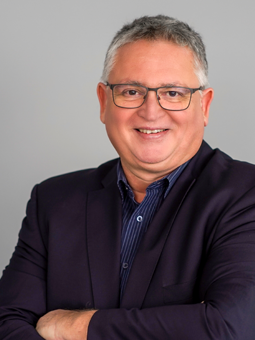Additive Manufacturing - Laser powder bed fusion process
Laser powder bed fusion process in 3D printing achieves a unique and promising quality turnaround.
The pace of innovation in additive manufacturing is accelerating all the time. The use of cutting-edge laser technology has been part of this trend for years. As a trailblazer in manufacturing, the ring-mode laser has made a name for itself in all things welding. But even more is needed for the LBPF (laser powder bed fusion) process in 3D printing. In this arena, a new laser that can toggle between single mode and ring mode offers a range of beam qualities from narrow to wide. And it has recently been joined by a new fellow player in the field of AM laser material processing. The way these two lasers work together is so unique and so full of potential that the results are causing something of a sensation in additive manufacturing. At this point, evidence is still being gathered to establish that this product combination provides a clear advantage in terms of quality and speed for laser manufacturing in AM.
In order to scientifically corroborate the improved quality and significant increase in productivity in additive manufacturing, Prof. Dr.-Ing. Katrin Wudy, expert and professor in laser- based additive manufacturing, is currently studying the unique combination of the AFX-1000 fiber laser and the AM MODULE NEXT GEN optical deflection unit at the professorship of Laser-Based Additive Manufacturing (LBAM) in the Technical University of Munich (TUM). Her research focuses on the influence of beam profile on microstructure formation. “We cut apart the workpieces that this process produces, before examining the grain structure in the microsections created under the microscope,” says Wudy. Although this research is still ongoing, it has already been established that the zoom axis of the AM MODULE from RAYLASE produces a doubling of the beam diameter with optimum focus position – without affecting the single-mode or ring-mode form of what is known as the beam caustic. In combination with the many options offered by the programmable AFX-1000 laser from nLIGHT, this opens up an extraordinary number of new applications based on the creation of a wide range of beam profiles.
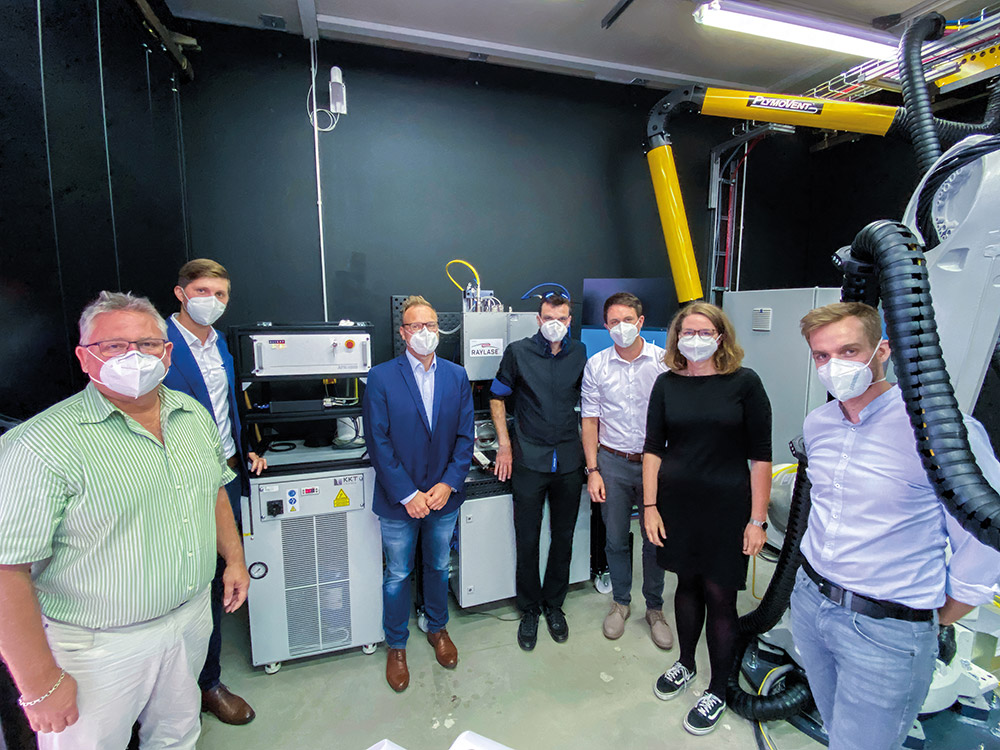
The expert team (left to right): Wolfgang Lehmann (Head of Product Management, RAYLASE), Christian Schröter (Sales Director Optoprim Germany GmbH), Philipp Schön (CEO, RAYLASE), Marc Schinkel (Application Engineer, RAYLASE), Jan Bernd Habedank (Head of TCC, RAYLASE), Prof. Dr.-Ing. Katrin Wudy (TUM), Jonas Grünewald (research associate, TUM)
Combining the best of both worlds
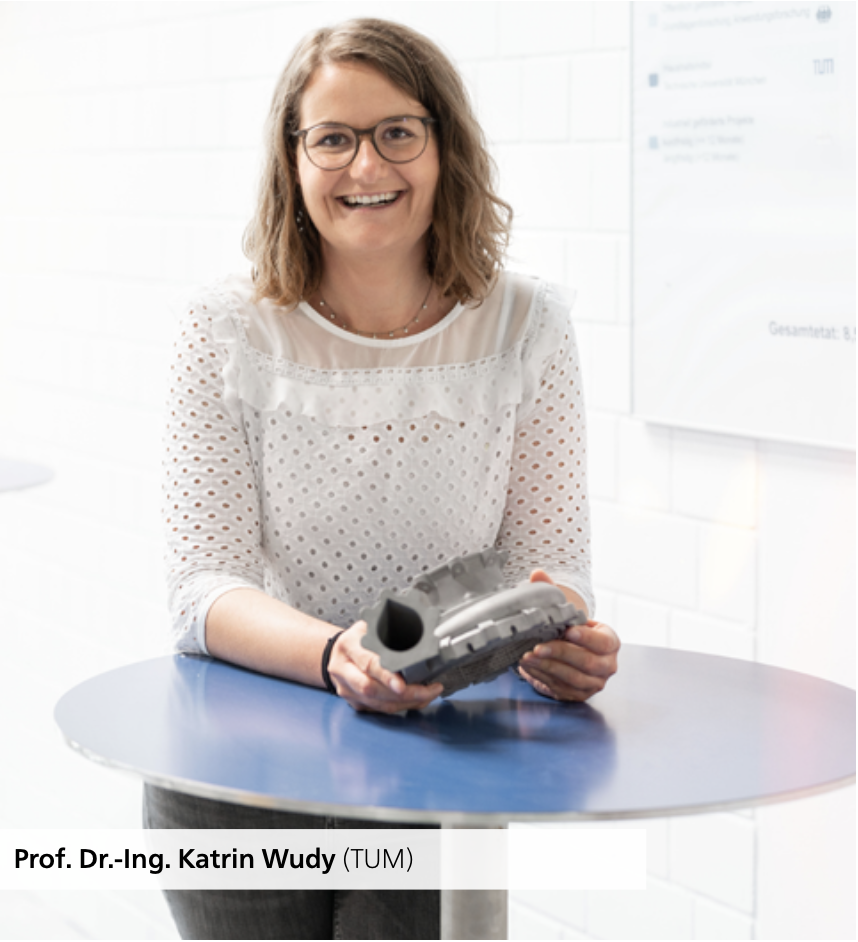
“With powder bed-based melting and with welding processes in general, the individual grains grow in the opposite direction of the heat flow. Due to the altered geometries of the melt tracks when using alternative beam profiles, temperature regulation is also changed. As a result, we’re seeing different grain sizes and different grain textures in the initial microscopy findings. The grain size and texture are both responsible for the resulting component properties, such as ultimate tensile strength or ultimate strain. So, if we can strategically control grain growth by selecting specific process parameters and beam profiles, the resulting component properties can be fine-tuned – for example, we can make particular parts of a component especially stiff or pliable without any additional post-processing. Properties can also be varied within a single component using sophisticated exposure strategies.”
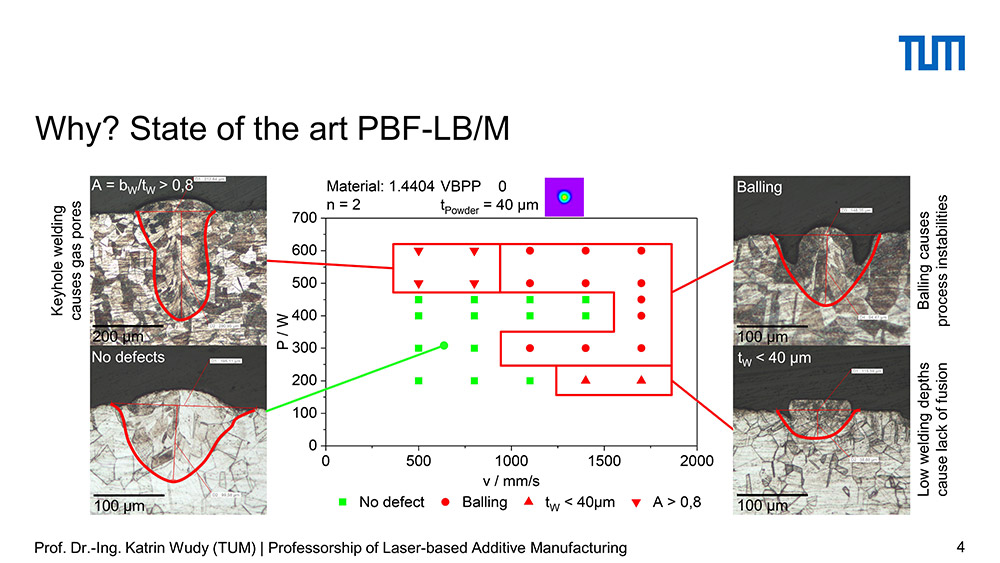
This is best illustrated by the example of a bicycle chainset, in which the fixing bolt should be as hard and wear-resistant as possible, while the crank arm should be more malleable. While unwanted keyhole effects occur (red in the picture, top left) at low processing speeds and high laser power, good melting results without defects (green) are achieved at low to medium speeds and corresponding laser power outputs. High laser power outputs may also cause an unwanted “balling” effect, which leads to instabilities in the melt track. If the speed is generally too high at low laser power outputs, the depth of the melt pool is inadequate (red, bottom right).
fast processing speeds in additive manufacturing
The optical elements of the AM MODULE NEXT GEN and the programmable AFX- 1000 fiber laser from nLIGHT enable fast processing speeds and eliminate many problems in additive manufacturing.
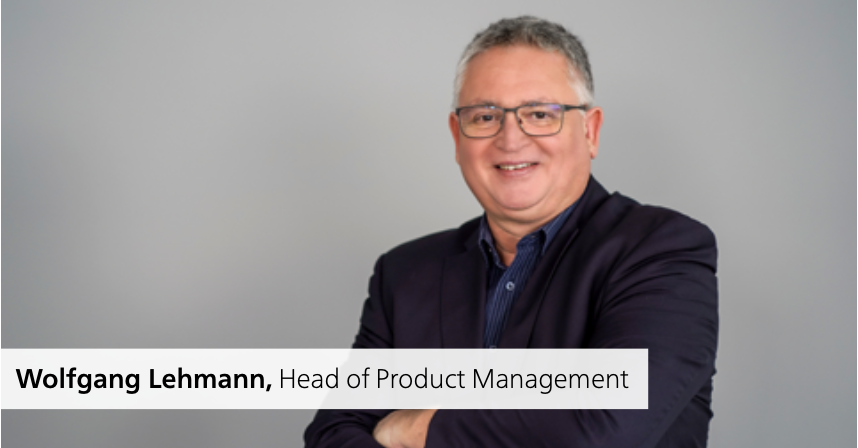
“The Technical University of Munich, Optoprim – the German distributor of US laser manufacturer nLight, and RAYLASE have joined forces to overcome the critical process limitations of laser LPBF applications – such as lack of homogeneity in the melt pool and reduced production speed,” says Wolfgang Lehmann, Product Manager at RAYLASE, highlighting the benefits of this extraordinary collaboration.
In conventional AM processes with a single-mode laser, a range of defects may occur that can be prevented by using a combination of products, comprising a programmable fiber laser and a deflection unit with a zoom axis. The reason for this is that high laser power outputs combined with fast scanning speeds very often cause the following effects in laser-based and powder bed-based additive manufacturing processes with metals:
- keyhole formation due to overheating
- inadequate melt track depth
- powder denudation zone (powder-free zone) around the solidified melt power
- balling in the melt pool
Laser functions in single mode and ring mode: Precise beam control with a range of beam forming options
“Our goal was to use an innovative type of fiber laser – not only to create typical single-mode beams, but also to combine its functions with those of a ring-mode laser to really crack open the potential and to improve the quality of the melt pool. And we succeeded! With the ring-mode laser, we can create a particularly homogeneous melt pool with very little spatter. This just couldn’t be done with the conventional single-mode laser alone”, says Christian Schröter from Optoprim Germany, the German distributor of nLight, highlighting the benefits of the AFX-1000 laser.
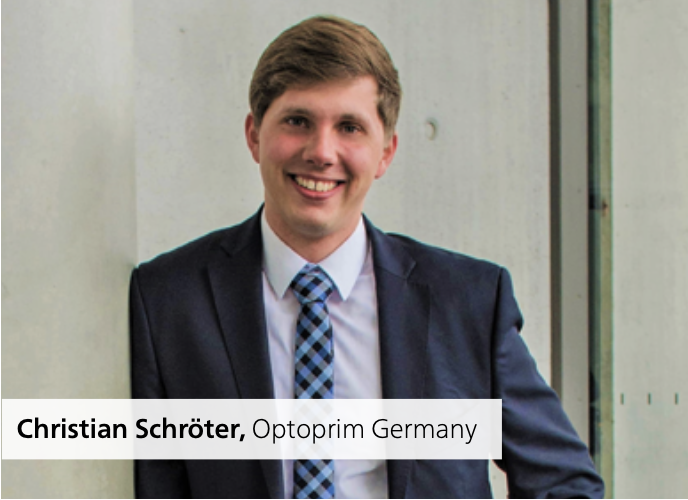
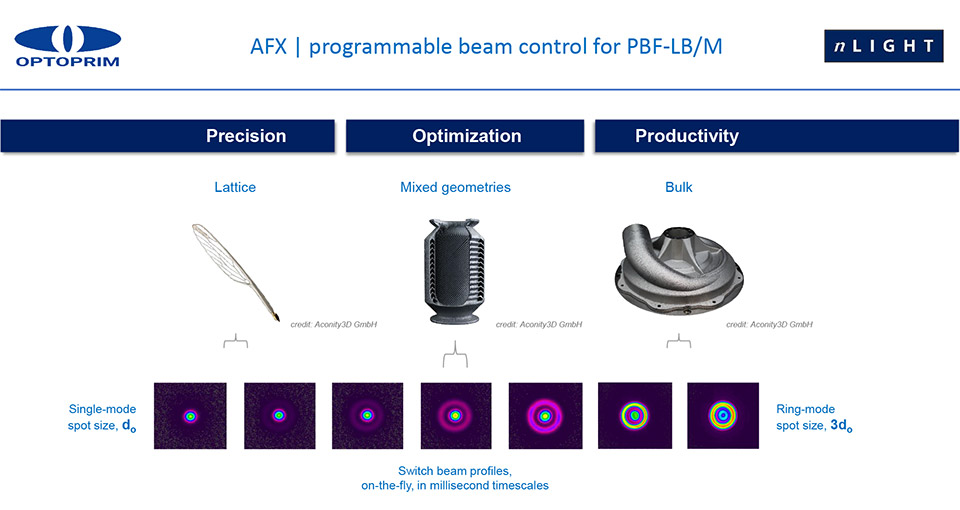
The AFX fiber laser enables switching between seven different modes or beam forms based on the intended result of the component‘s geometry. Each mode switch takes less than 30 milliseconds. Source nLIGHT/Optoprim
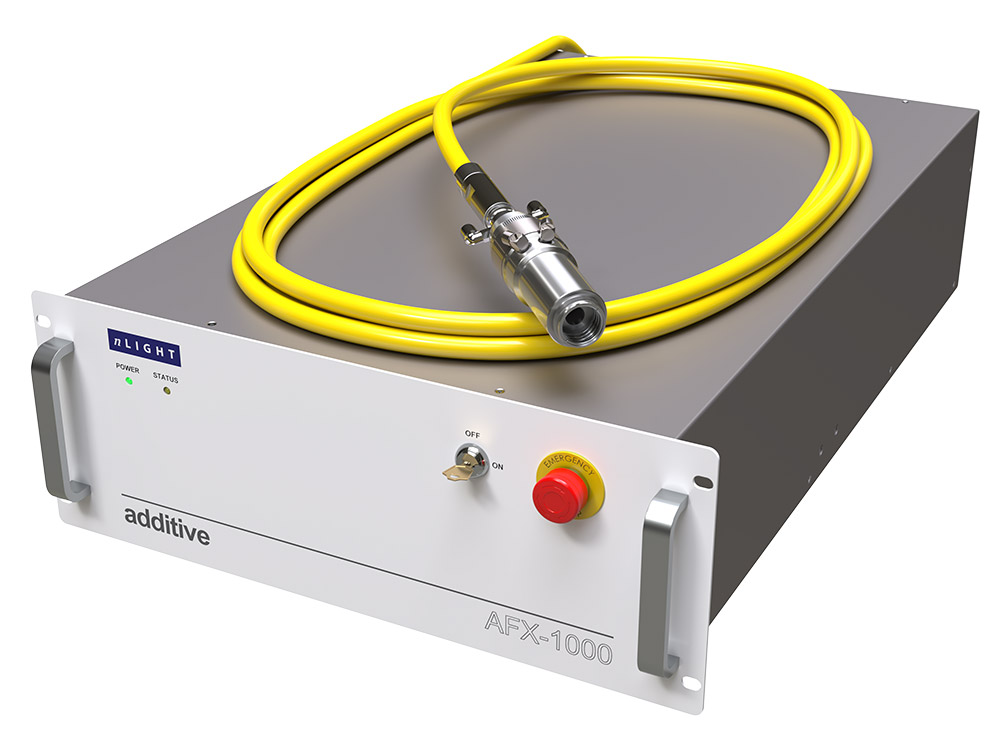
The programmable nLIGHT AFX-1000 offers precise beam control based on single mode and ring mode in up to seven different laser beam profiles. Source nLIGHT
The intensity distribution of the laser beam sources, consisting of a single-mode centre and a ring beam, can be switched instantaneously from a typical Gauss profile to six different ring-shaped profiles. The various power outputs of the two overlying laser beams generate an extremely attractive, homogeneous energy input while avoiding spatter and heat cracks. This is crucial for “hatching”, i.e. the movement of the laser in a meander pattern based on exposure geometries in additive manufacturing. The aim here is to build up or to expose and fuse specific squares on the surface like the squares on a chessboard. The wider the laser beam track, the faster these can be filled and, in turn, the faster the speed
of the component manufacturing process. “The edges of the workpiece should be as clean as possible and can be postprocessed very effectively with the narrow single-mode beam of the laser’s central fiber,” Schröter explains. Variable use of single mode and ring mode increases productivity by a factor of around 2.8. If they are used together, however, they are completely unrivalled. The AM MODULE zoom increases the width of the melt track by a factor of 5.5.
Unique in the market - the fiber laser and deflection unit combination broadens horizons in additive manufacturing
While the programmable fiber laser already has a lot to offer, the possibilities are doubled when it is used in combination with the deflection unit’s zoom lens. As Wolfgang Lehmann explains: “We can position the laser tracks with a very high degree of precision depending on the processing field size – to an accuracy of less than 5 μm. The ideal width of the melt tracks depends to a great extent on the grain size of the powder particles. This is normally between 15 μm and 100 μm. Which means that the spot size has to be adapted accordingly. With the AM-MODULE NEXT GEN, the spot diameter can be infinitely adjusted and dynamically doubled during the process.”
Challenge: Additive manufacturing simpler, faster, better
The challenge in the serial AM value chain with laser powder bed fusion is to organise the process of constructing a component in a way that is as time-efficient as possible while also maintaining the highest possible quality standards. The homogeneity with which the metallic powder is melted into a workpiece is of key importance, as it results in greater strength and improves the surface structure. However, the speed and the range of applications also play a critical role.
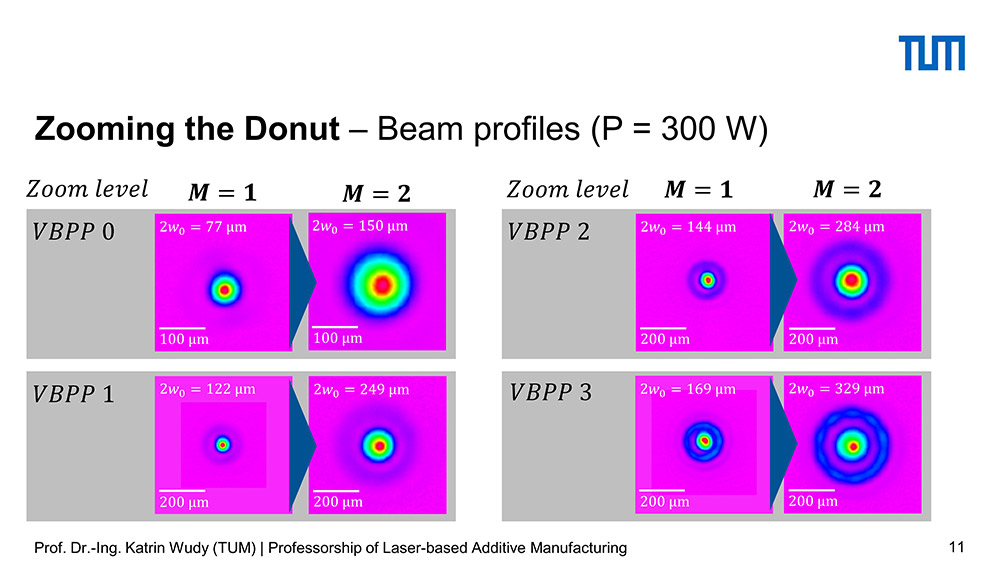
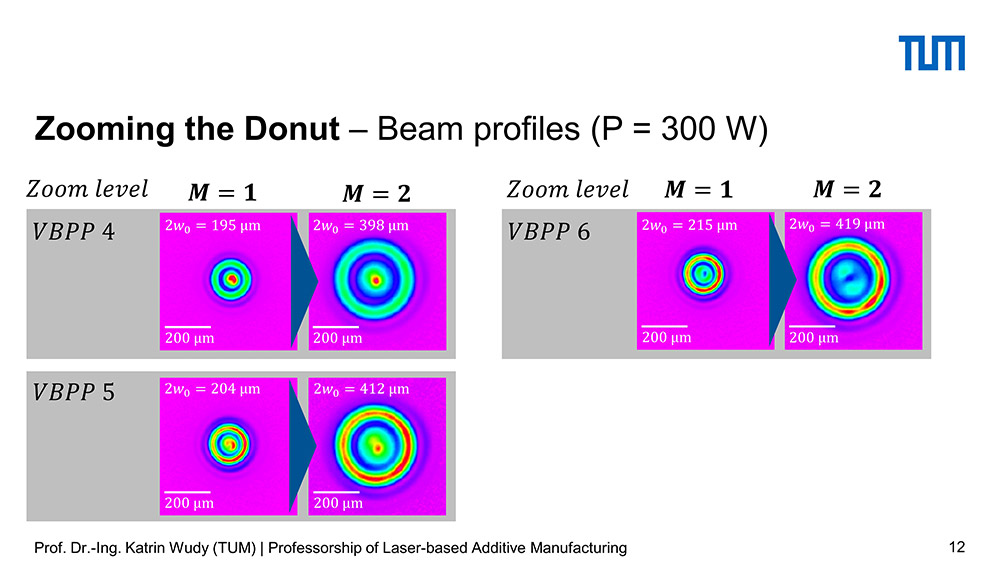
Two become one – with the unique combination of fiber laser and deflection unit, machine manufacturers are expanding the spectrum, i.e. the process window for laser powder bed fusion (LPBF). This produces a boost in productivity with a simultaneous improvement in the microstructure of components. Source: TUM/LBAM
The product combination offers both. With its highly dynamic deflection mirrors, the deflection unit is capable of deflecting beams around corners at very high speeds. For the hatching process, the AM-MODULE NEXT GEN offers an integrated fiber collimater, a cleverly designed “zoom axis system” for dynamic spot size configuration and numerous process monitoring options for quality control. This ensures consistent spot sizes and power densities at every point in the process field. The result is a sharp rise in quality and productivity.
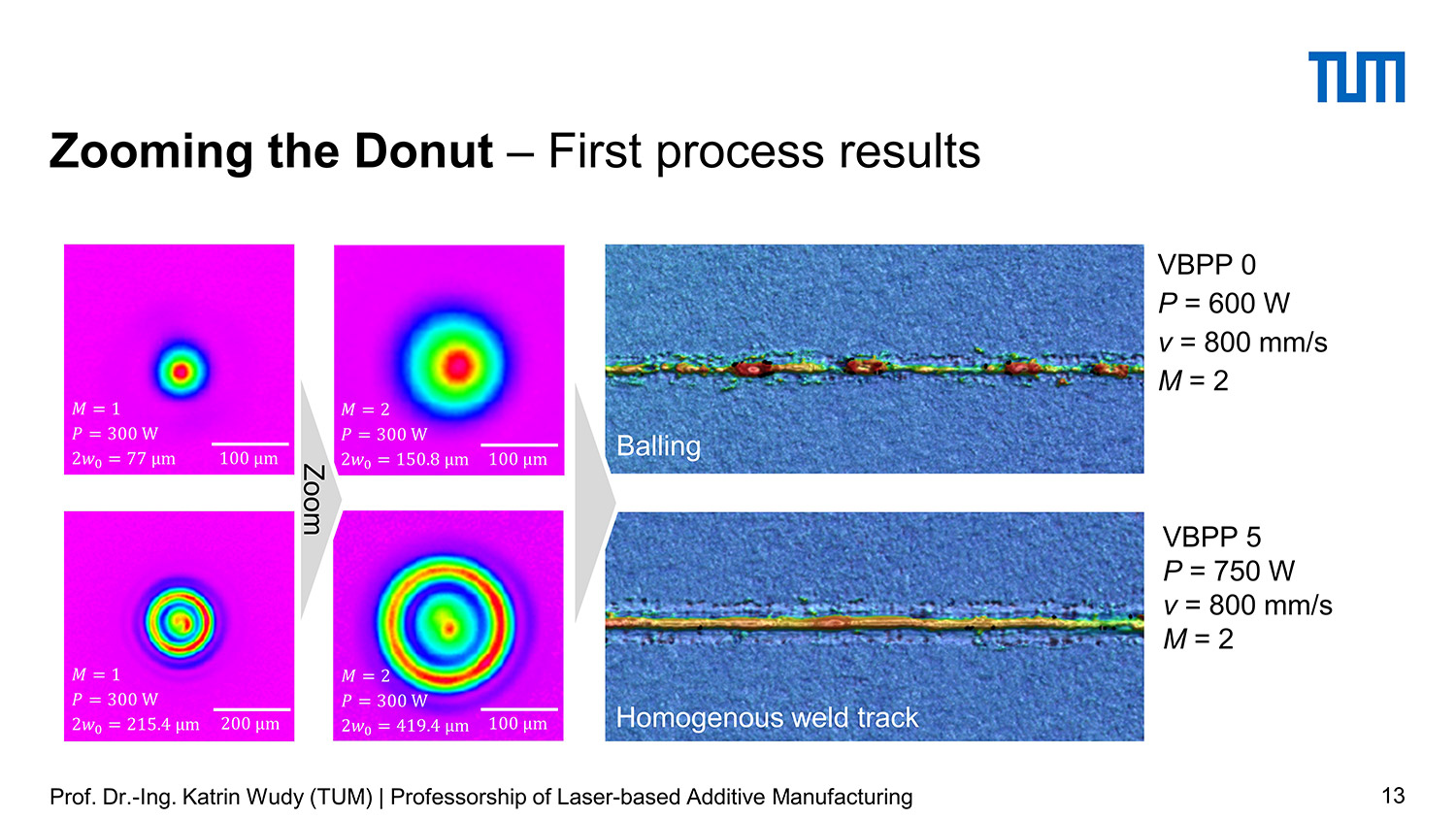
The various beam forms can be easily identified in the picture – a single-mode beam caustic at the top and ring-mode beam caustic at the bottom. The ring-mode caustic produces a very homogeneous melt pool with no balling, greatly reduced spatter and clear edges.
Source: TUM/LBAM
The RAYLASE solution: Unique for laser powder bed fusion in additive manufacturing: The AM MODULE NEXT GEN
The AM MODULE NEXT GEN for fiber-coupled lasers – and for the AFX-1000 in particular – boasts homogeneous power density and exceptionally low drift values. It enables rapid processing with flexible spot diameters. Fully digitised, model- based control is ensured with absolute precision. Up to 4 laser scanning heads can be operated simultaneously over one processing field. Direct connection of a photodiode or pyrometer for process control is also possible.
The module is available in two variants – as a standard module or a high-performance module with fully digital deflection units. The high-performance module is designed for use in the manufacture of ultra-high precision components which must satisfy particularly rigorous safety specifications. This version is of particular interest for users in the aerospace industry, automotive manufacturing and medical engineering.
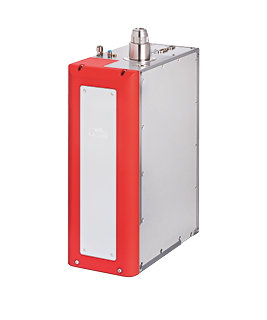
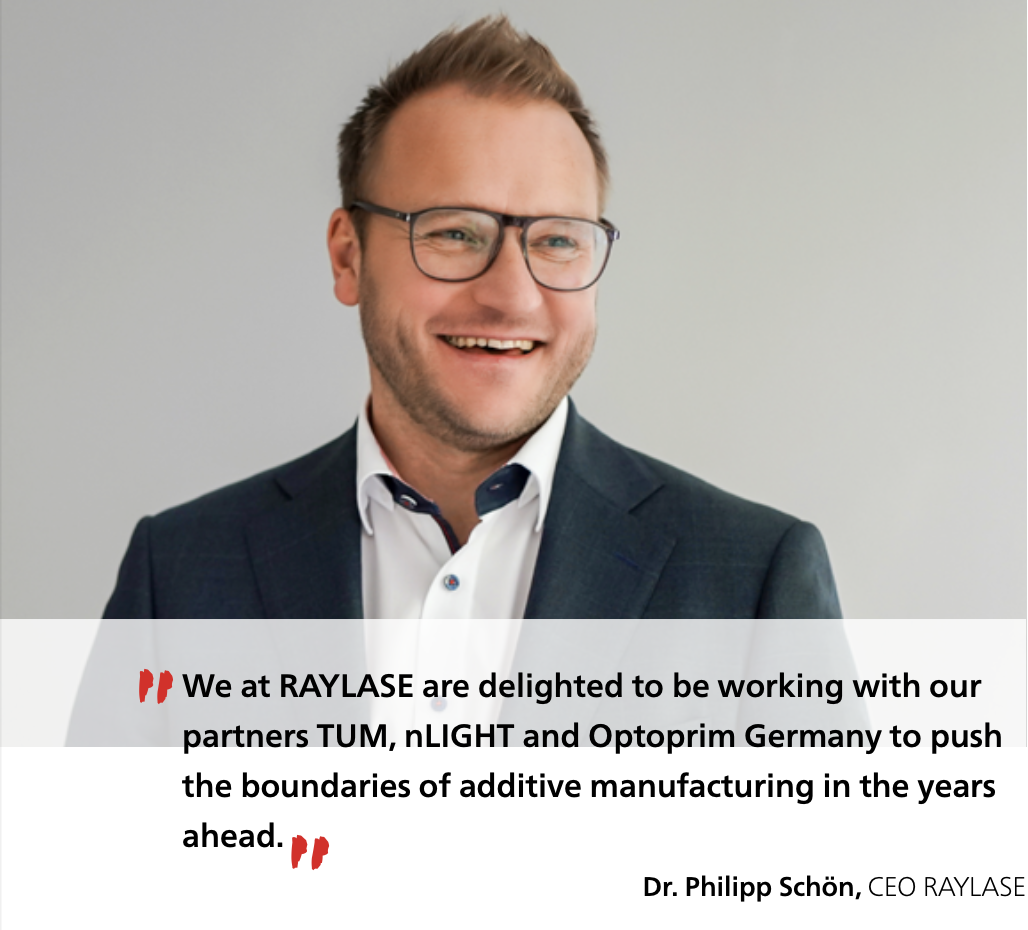
Professor Wudy ventures a prediction for the future: “Combining the AM module from RAYLASE with the programmable ring-form beam profiles of the AFX laser from nLIGHT will literally revolutionise additive manufacturing with metals. This approach allows us to scale beam forming concepts and, in turn, to adapt laser- based processing to faster and optimized processing conditions with more stable and simultaneously larger melt pools.”
